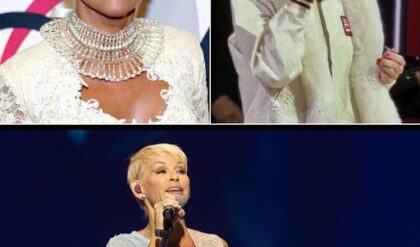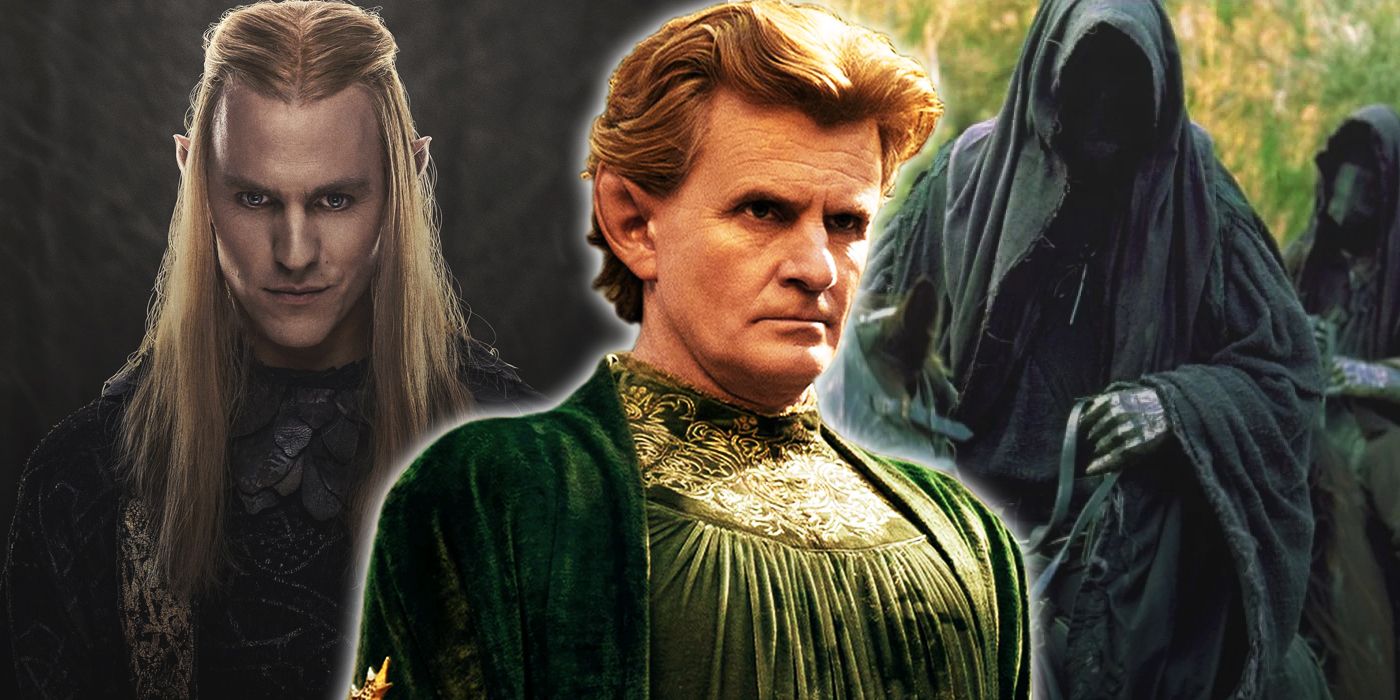
The latest episode of Amazon’s The Lord of the Rings: The Rings of Power, “Doomed to Die,” showed the Elven smith Celebrimbor discovering Sauron’s ruse in order to get him to create the nine rings of power for Men. In a prison of his own mind, Celebrimbor completed the nine rings for Men that he was hesitant to craft, with no distractions. It’s not until he realized small things looping around him, like a mouse in his workshop repeatedly performing the same actions, that he was able to see Annatar for what he really was — the Dark Lord Sauron. By this time, however, it’s too late. Sauron has convinced Celebrimbor’s followers that he’s gone mad, and Eregion is under siege by Adar and his army of Orcs. The fate of the nine rings now hangs in the balance.
Die-hard J.R.R. Tolkien fans know that the nine kings of Men who receive the rings will eventually go on to become the Ringwraiths (or Nazgûl) in The Lord of the Rings. The dark hooded figures that plagued Frodo’s every step on his mission to destroy Sauron’s One Ring. Rings of Power, however, has currently left audiences with one looming question after Galadriel falls into possession of the rings at the end of Episode 7: How will Men come to possess them?
Tolkien Gave a More Detailed History of the Nine Rings of Power in The Silmarillion
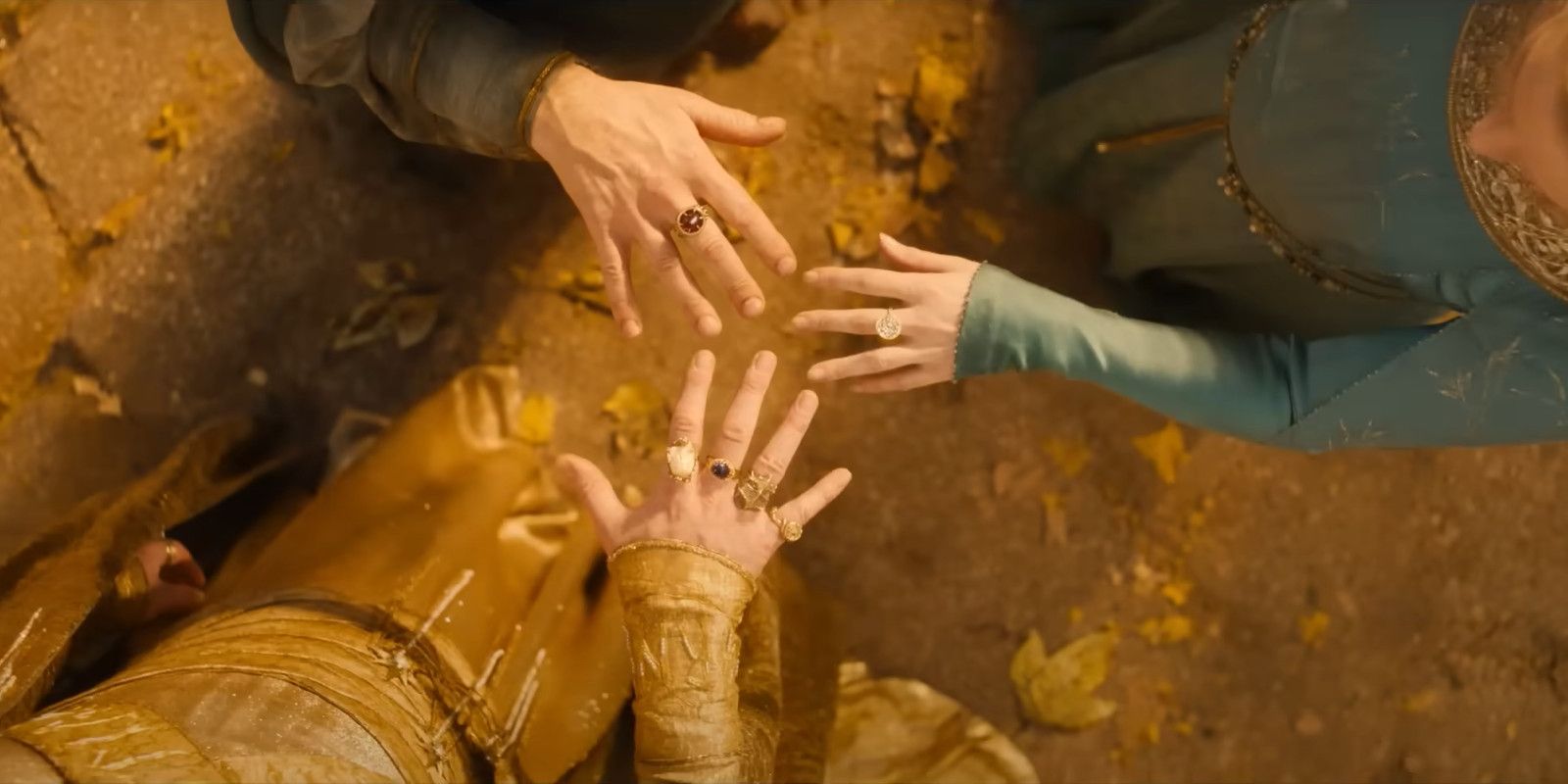
In the prologue of Peter Jackson’s movie adaptation of The Lord of the Rings: The Fellowship of the Ring, audiences are given a brief overview of how each of the rings were distributed. The script made a point to mention something specific about each of the races of Middle-earth who were gifted with the rings. The Elves are described as “immortal, wisest, and fairest of all beings.” The Dwarves are characterized as “great miners and craftsmen of the mountain halls.” Men are the only ones whose descriptor is given a negative connotation. Galadriel (the narrator) says that “above all, [they] desire power.”
Tolkien’s own prologue was written in verse and famously mentioned each race briefly and how many rings were gifted to each. Three for the Elves, seven for the Dwarves, and nine for Men. A relevant section of that poem here reads: “Nine for Mortal Men, doomed to die.” The title of Rings of Power, Episode 7, is directly pulled from this line of the poem. Just as Jackson’s prologue inferred, there was something dangerous about putting this much power in the hands of Men. Even Men who were once favored by Elves, such as the Númenoreans, who envy the undying nature of Elves.
In Tolkien’s posthumously published work, the making of the nineteen rings was more extensively explained than in The Lord of the Rings. In the last part of The Silmarillion, “Of the Rings of Power and the Third Age,” Tolkien described the forging of the rings in Eregion (how they were initially crafted for Elves) and the Elves’ discovery of Sauron’s plot. Just as in Rings of Power, Sauron originally presented himself as Annatar, Lord of Gifts. The Elves take action to shield the rings from him once his identity is discovered. In his fury, he wages war against them. It’s during this conflict that he regains the seven which eventually go to the Dwarves and the nine to Men.
Rings of Power has taken some liberties and reordered some of these events. By the time the nine rings are made for Men, the Dwarves are already in possession of theirs, leading to an escalating madness in Durin III, king of Khazad-dûm. Tolkien wrote that Sauron distributed the nine rings to Men. Included in this act were Númenoreans and the eastern kingdoms of Middle-earth. With only one episode left, there may not be much chance audiences will see the distribution of the nine rings to the realms of men or the transition of these kings into Ringwraiths. It’s possible showrunners J.D. Payne and Patrick McKay will save that descent for Season 3. But it would be compelling to at least get a taste of those events unfolding before Season 2 draws to a close.
Rings of Power Episode 7 Raises a Major Question Regarding the Nine Rings for Men
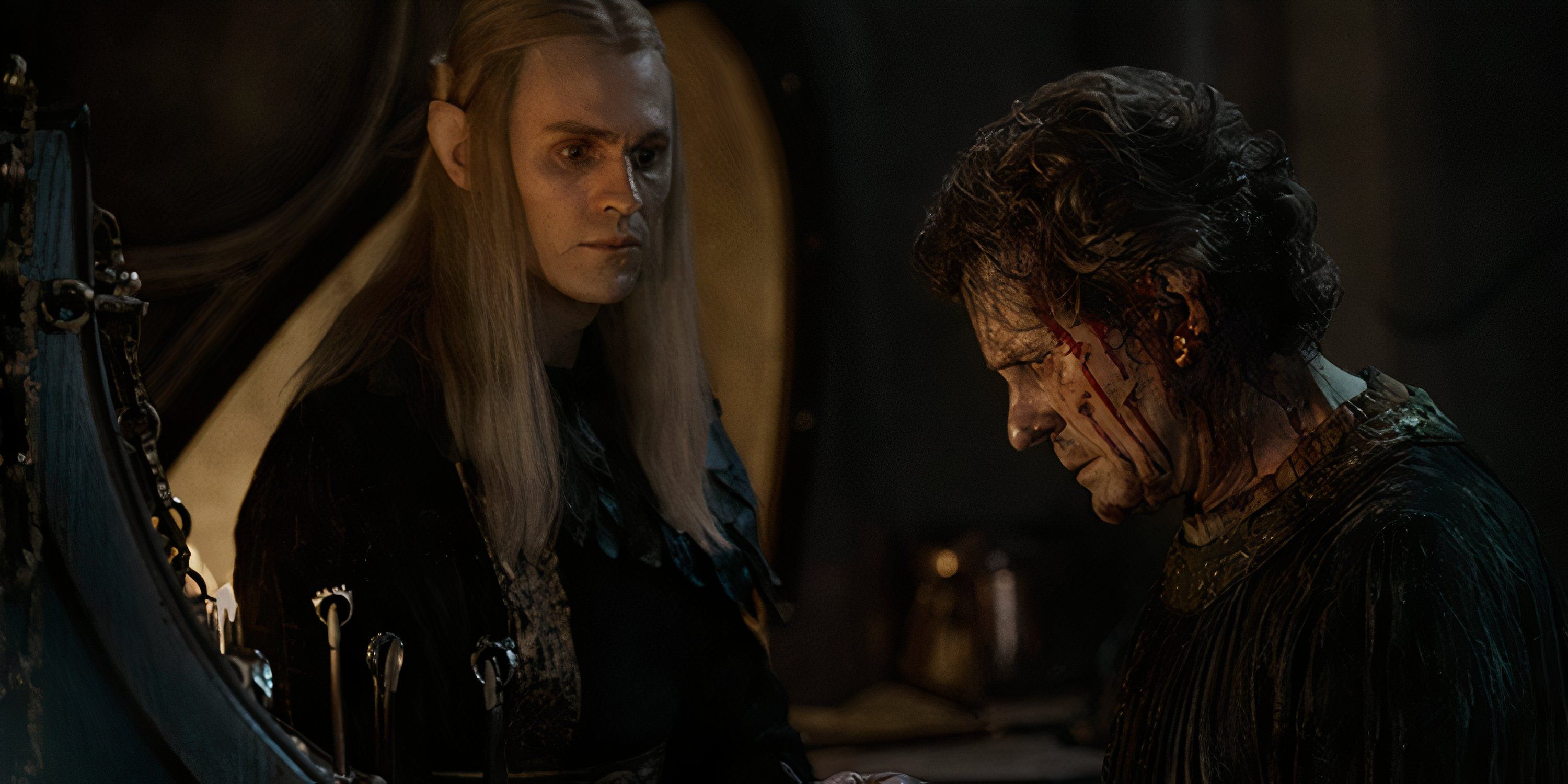
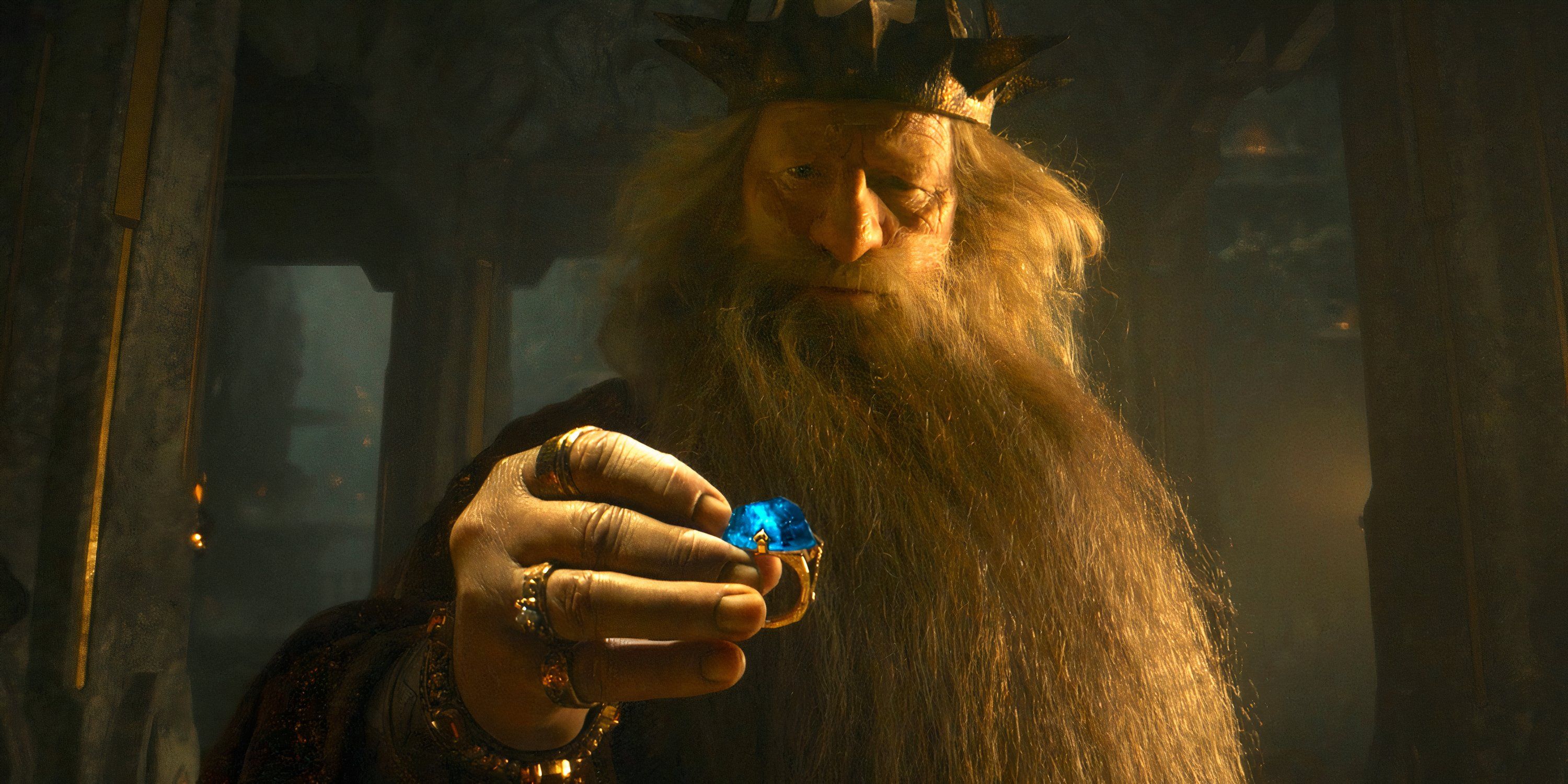
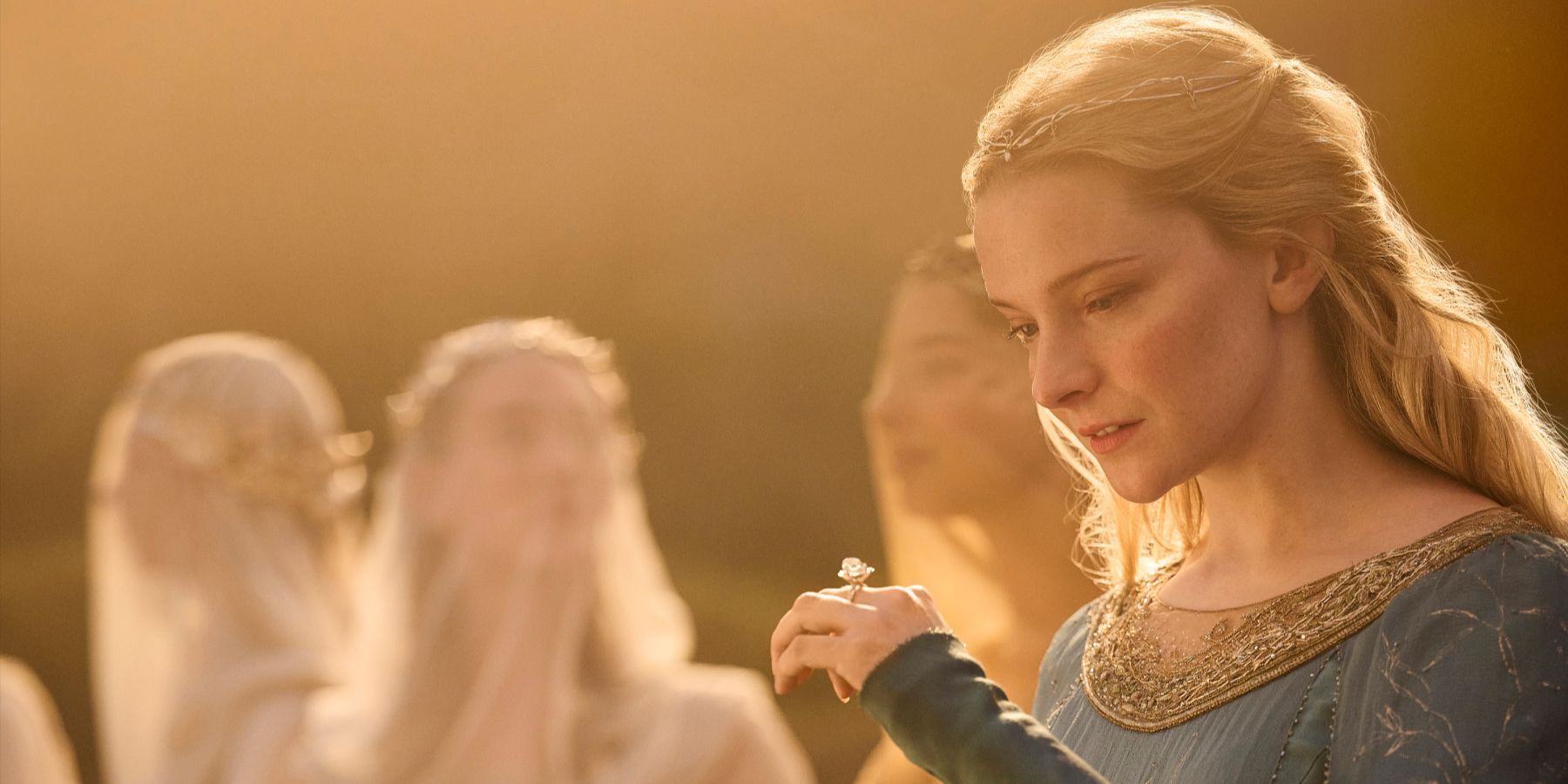
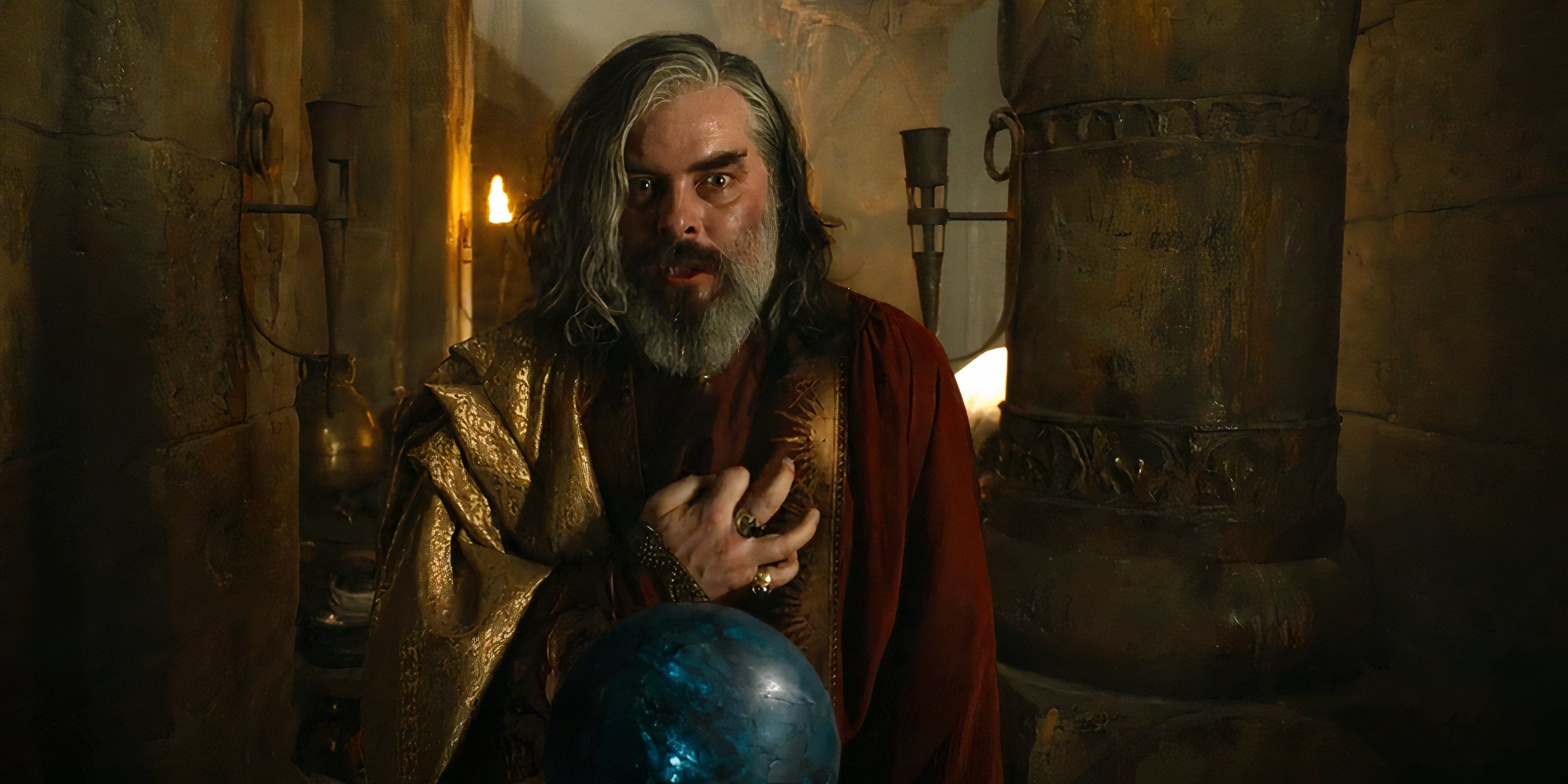




The larger question raised at the end of Season 2, Episode 7 of Rings of Power, pertains to how the nine rings will be regained by Sauron. Viewers are left with a scene in which Celebrimbor was able to slip Galadriel the nine rings before Sauron was aware. Instead of leaving Eregion himself, it seems he is fated to fall with his kingdom, which is canonically correct. In Unfinished Tales of Númenor and Middle-earth, Tolkien described Celebrimbor’s fate further. Under torture from Sauron, Celebrimbor was forced to disclose the location of the other rings, but he refused to tell Sauron where the three Elven rings were. He eventually succumbed to his injuries, and his body was paraded in front of his fellow Elves when Sauron attacked the Gray Havens.
It’s possible Rings of Power will bring Celebrimbor’s story to an end in the Season 2 finale. Logistically, it would make sense not to bring back Charles Edwards for another season when his character is so close to his demise, according to Tolkien’s lore. Although it is sad to consider, given that Edwards has given a dedicated and stellar performance as the Elven smith. Audiences should definitely brace themselves to see a sad but possible redeemable end for Celebrimbor. The show certainly created a dynamic arc for the Elven lord, allowing Sauron to tempt his pride in order to get the rings created. Potentially a change from Tolkien, but nothing Jackson didn’t do in his own movies to flesh out the characters.
Other Titles Given to Ring-wraiths and/or Nazgûl
Fell Riders
Black Wings
Nine Riders
Black Riders
Shriekers
Wraiths on wings
The Ringwraiths
Úlairi (in Quenya)
There is still a lot of ground to cover after the nine rings fall into the hands of Men. If the show writers follow Tolkien’s blueprint, it’s possible Celebrimbor will betray Galadriel’s whereabouts in his final moments, bringing her face to face with Sauron once more. However, given that there seems to be a genuine desire from the writers to create sympathy for Celebrimbor and his character — despite his poor choices — perhaps his ending will play out differently. Regardless, it’s entirely possible that by the end of Episode 8, the nine rings will be in the hands of Sauron. And as fear builds in Númenor now that Pharazôn is making use of the seeing stone, it may even come to pass that viewers could see a ring in his hand rather soon. Superfans would be well-aware that in Tolkien’s canon this is not the case, but it might be an interesting direction for the show to take.
The Rewriting of Tolkien in Rings of Power Is Sometimes Necessary for Dramatic Purposes
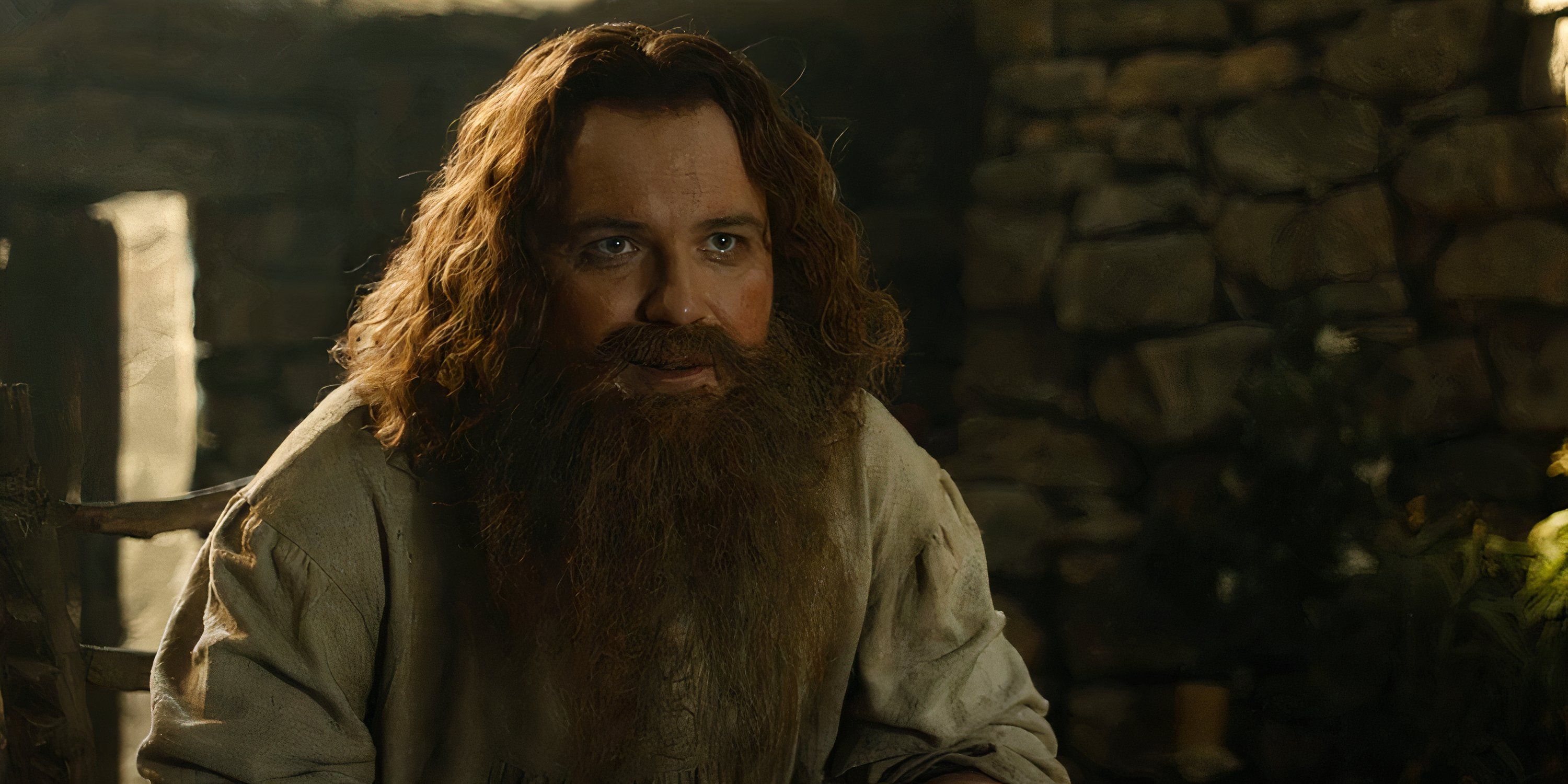
As fans of Tolkien’s universe have seen, for better or worse, much of Tolkien’s work has been altered for the screen for one reason or another. Jackson justified many of his changes in detail on the behind-the-scenes DVDs in the Lord of the Rings box set releases upon completion of his movies in the early 2000s. It could be argued that The Hobbit movies, released years later, took far more liberties with the source material and with less validity. Unfortunately, a tight timeline and production woes can be attributed to many of the unevenness of The Hobbit trilogy. Giving it maybe just a tad more leeway with audiences. No matter how much Jackson altered Tolkien’s work, he still seems to be genuinely more favored by a large portion of the fan community than McKay and Payne.
According to Peter Jackson, before the release of his movie versions of The Lord of the Rings , J.R.R. Tolkien’s books were considered “unfilmable.”
Regardless of the popularity among the adopters of Tolkien’s work, it has to be acknowledged that his books were considered unfilmable for many years. Jackson himself stated in the same behind-the-scenes interviews on his DVDs that he knew he was taking on a Herculean task. And given the fact that much of the material Payne and McKay are working with was never actually completed by Tolkien himself, they have to build a great deal of story structure themselves. It’s no small feat to tackle Tolkien, let alone craft characters and complete arcs out of what could simply be considered encyclopedic texts.
Tolkien’s son, Christopher, famously believed Jackson’s movies reduced his father’s works to kitschy action films. Still, they have managed to become beloved classics in the over twenty years since their release. Perhaps the same will happen with Rings of Power once the dust settles and audiences see it for what it truly is: an insurmountable cinematic endeavor.



